An Independent Study project on Diversifying Outdoor Recreation. It is recommended that you start at the bottom and work your way up! :)
Don't wanna be here? Send us removal request.
Text
National African American Museum Set to Host Hip-Hop Block Party
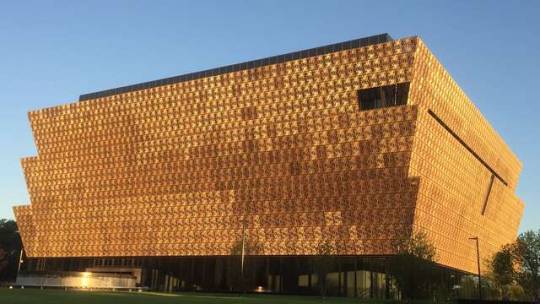
This world-renowned center of black history is celebrating African American art with a major block party this upcoming August. A Block Party to Remember The National Museum of African American History and Culture (NMAAHC) has announced plans to throw a rap block party. The Smithsonian released a promotional poster and official statement last week, detailing the exciting event. https://twitter.com/NMAAHC/status/1536317666113294338 According to the Smithsonian, the block party is packed with “performances by local and national talent, presentations and activities that explore hip-hop music’s origins and cultural influence”. To honor the one-year anniversary of the Smithsonian Anthology of Hip-Hop and Rap, a public celebration is scheduled for Saturday, Aug 13. Rap fans and black history buffs will have plenty of time to enjoy the music and festivities. The block party will run from 11 am - 11 pm. If you can snag a ticket, you’ll be treated to performances by O Slice, Yungmanny, Phuzz, and Mimi Fresh just to name a few. One notable performer is D-Smoke, a contender in season 1 of The Rap Game on Netflix. DC is famous for its thriving block party scene. Capital Pride Block Party, The Block Party Carnival, and the HUSL Block Party are just a few of the yearly events the area hosts. Along with its bustling brunch culture and the go-go music scene, DC is a nonstop hub for black culture And camaraderie. The Smithsonian Anthology of Hip-Hop and Rap has already received glowing reception in its first year. Luckily, party patrons will be able to explore the museum displays during the building’s routine hours. If you’re a local foodie, there’s a reason to stop by. The Sweet Home Café, located inside the building, will be serving “hip hop-inspired” cuisine. The live performances will take place inside The National Museum of African American History and Cultures first floor. There will also be an outdoor stage a short distance from the museum. Recognizing Black Music as History In addition to the block party, the Smithsonian is also premiering the seventh installment of its ongoing web series gOD-Talk 2.0: Hip-Hop & #BlackFaith. This series features several accomplished rappers and academics having enriching discussions about the culture. This special new episode promises to “explore the relationship between hip-hop culture and Black expressions of faith and spirituality.” You can tune in on Facebook Live Sunday, Aug 14 to catch the episode. The associate director for curatorial affairs for NMAAHC Dwandalyn Reece is all on board. She spoke about her excitement for the event in a recent statement. “The origins of hip-hop and rap rest in community where people gathered together in basements, on street corners, neighborhood dance parties and community shows to tell the stories of the people and places that brought it to life in a language all its own.” She began. “It is only fitting that NMAAHC celebrates the one-year anniversary of the Smithsonian Anthology of Hip-Hop and Rap with a block party in our front yard. Like a true block party, we invite all ages to come together to enjoy activities and performances in honor of the museum’s greatest homage to the music and culture of hip-hop.” She explained. Truly, this upcoming August has plenty in store for DC’s history and music buffs. Visit the official event site for tickets and further details. Also, Follow FM Hip Hop on Instagram and Facebook Dreema Carrington|IG: @dr3amgirl79 | Twitter: @notdreema Read the full article
9 notes
·
View notes
Text

Why: African-Americans have historically been marginalized in the Outdoor and Adventure education fields and the outdoors in general. Ever since arriving in America, the American terrain has been brutal, unwelcoming, and deadly for African-Americans. On the other hand, African-Americans have a long history of interacting with and relying on nature in America. Unfortunately, much of this information was lost and disregarded during the great migration. Thus, Workin the Roots is a program that helps African-Americans to reconcile with nature and to build a personal connection and relationship with nature that can be passed along for generations.
1 note
·
View note
Text
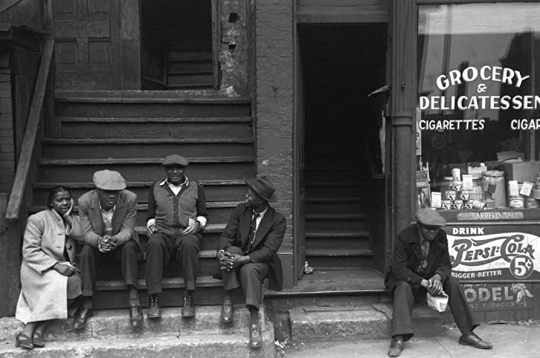
Go Ahead- sit on your stoop!
The Act of sitting on your stoop is not just a culturally relevant activity done within the African American community, but instead, we see a connection between this activity of sitting on one's stoop in a city connected with several marginalized and generally lower socioeconomic status communities (Gomez, 2016). So, that means that we can look at this activity across many marginalized groups.
What do we know so far in this blog? We know being outdoors has many great benefits for one's health. We know that the sense of community is good. We know that it is important to expand our sense of what outdoor recreation is to allow for more chances for recreation.
Though, this next idea hasn't been fully fleshed out in this blog. We should also look at this project as proposing one thing...if we expand our ideas of what outdoor recreation is, then, this will allow us to create better and more connected communities. Outdoor recreation and leisure provide multiple ways for us to connect with the outdoors, each other, and/or our communities. Emphasizing these principles, and how outdoor recreation and leisure is NOT just going into the wilderness, then allows us to see the importance, the cultural history, and the ways our bodies benefit from interacting in the outdoors and with the outdoor world in any way possible. This can allow for more people to consistently and constantly see the importance of the natural world, while also wanting to put money into making communities healthier and greener instead of focusing on the current place and the "other", be it Harlem or the Hoosier national forest. This whole project emphasizes and shows the importance of the biosphere. If this all sounds like gibberish-... all i am saying is community-based living
So- how does this rant relate to the act of sitting on one's stoop? Sitting on one's stoop is a way we interact with the natural world around us while also creating community with those around us, so we can relax, connect, and just overall find pleasure.
In many ways, we have viewed this way communities interact with their environment as "tacky" or "inner-city". Instead, we need to view this activity as just another way we interact with the environment. Another way we participate in outdoor recreation and leisure. This is how we positively impact the health of all.
Citation: Gomez, M. B. (2016). Policing, community fragmentation, and public health: Observations from Baltimore. Journal of urban health, 93(1), 154-167.
0 notes
Text
Gumbo and Nature, Interacting with Nature one boil at a time
My main thesis about Outdoor recreation and nature is that it should be viewed as an interdisciplinary practice. Outdoor recreation should be viewed as the connecting glue between so many parts of life. Live, Laugh, Love the outdoors?
We should view the outdoors as more than JUST nature. We need to see how nature comes into our lives and how we understand the world around us.
This is where we look at the history of Gumbo and, specifically, its history with New Orleans and the outdoors. Attached is a video talking about where Gumbo "comes from" and talks about the general history of it's ties to New Orleans.
youtube
Another important thing to consider is where gumbo has been historically cooked and how where it has been cooked has impacted people's connection with the outdoors.
When you take a look at Southern cuisine, there is a deep history of outdoor cooking. Specifically, freshly caught/slaughtered food or aged meats along with delicious veggies are brought to a pot on an open flame to simmer together for hours and make gumbo, seafood boils, or anything in-between (Williams, 2020). Historically southern, creole, cooking was done outside. This history also is intertwined with African American history in these areas.
Cooking is generally seen as a leisure activity- but do we see it as an outdoor recreation activity? Depends on who you ask and how exactly you are cooking outside. Many people might not agree that cooking gumbo outside is outdoor recreation, instead, they might say that cooking s'mores after camping is or other primarily white activities. We are looking at cooking and outdoor recreation through a white point of view though. We need to expand it. Though, I would argue you that when you cook- you are interacting with the food in front of you and the environment in which you are cooking. Cooking outside, specifically after a fresh catch or recent collection, allows you to interact with the outdoor world. You need to know the best season to catch fish, how animals eating certain food impacts flavor, and even how specific firewood will impact cooking. Cooking outside, specifically these historic creoles and African American dishes, is as much of outdoor recreation as cooking s'mores after a long hike. We just need to start recognizing it as.
Citation: Williams, N. (2020). It Starts With the Roux: Behind every bowl of gumbo, there’s a complex history. Eater. https://www.eater.com/2020/1/13/21056973/where-did-gumbo-originate-dish-history-new-orleans
0 notes
Text
“In the American imagination, natural spaces are popularly framed as ‘white’ spaces, in part because Black people were not allowed to enter certain parks or outdoor spaces until segregation ended (Meraji 2015). Most Black folks would not take their children into the woods or forests out of fear that something ‘bad’ would happen. The desire to protect oneself and one’s family from white supremacist violence translated into a cultural narrative that framed Black folks as being detached from nature.
I can’t tell you how many times I’ve encountered stereotypes that advertise the idea that Black folks don’t swim, camp, go hiking, travel, etc. These pernicious narratives are so pervasive because the dominant class fears Black people might trust their own sensibilities with the natural world.
Historically, nature has served as a site for some of the most heinous, violent racial crimes ever committed, which was captured by The Guardian in an article titled ‘Bad Things Happen in the Woods’: The Anxiety of Hiking While Black’ (Pires 2018). Consequently, ‘stereotypes persist that African Americans are physically and spiritually detached from the environment. This wrongheaded notion is so engrained in our culture that many of us have begun to believe it ourselves. But nothing could be less true’ (Glave 2010, 3).”
“....To paraphrase Audre Lorde, it’s not that the master’s tools can’t bring down his house, it’s that the master’s tools were never his to begin with. The dominant class manipulated natural spaces, environments, and bodies to serve its own oppressive agenda. Chris rips the chair’s leather with his fingers, breaking the fragile dermis of white supremacist domination that is symbolized by transmogrified cow skin.
As I noted earlier, the animal elements and skins throughout the home act as emblems of white supremacy’s attempts to master nature. Chris acts the way he does almost without intention, as though he’s being guided by a kind of hypnotic racial reflex.
It’s almost as if Chris has been here before, in this exact scenario, and he knows exactly what to do - a racial deja vu moment so to speak. Picking cotton, while a marker of Black oppression, simultaneously marks Black survival. This legacy of survival is what guides Chris through his captivity. Many viewers celebrate the moment when Chris rips cotton from the chair he’s bound to and stuffs his ears to avoid further hypnosis by Missy.
Not only is the ‘cotton moment’ a nod to antebellum slavery, animality, and captivity, it is also a commentary on taxidermy and zoological racism. Not only is the taxidermied buck’s head stuffed with white racial fantasies and projections, but the cow skin is also transformed into a stuffed item - reshaped to fit the comforts of white supremacy.
- Aph Ko, Racism as Zoological Witchcraft: A Guide for Getting Out
9 notes
·
View notes
Photo
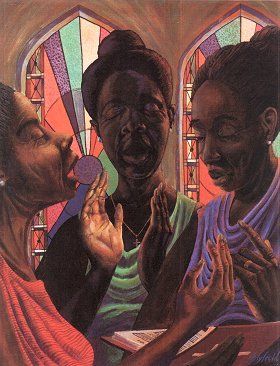

A shout or ring shout is an ecstatic, transcendent religious ritual, first practiced by African slaves in the West Indies and the United States, in which worshipers move in a circle while shuffling and stomping their feet and clapping their hands. Despite the name, shouting aloud is not an essential part of the ritual.
The ring shout was Christianized and practiced in some African American churches into the 20th century, and it continues to the present among the Gullah people of the Sea Islands and in the African Church.
A more modern form, known still as a “shout” (or “praise break”), is practiced in many African churches and non-African Pentecostal churches to the present day.
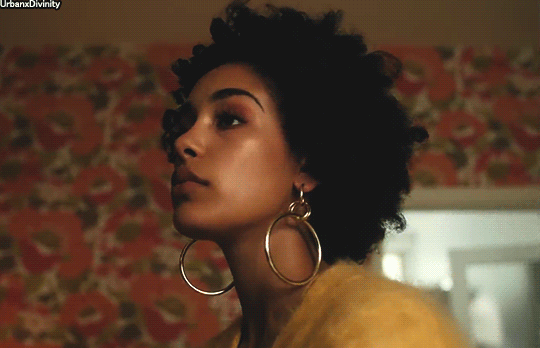
“Shouting” often took place during or after a Christian prayer meeting or worship service. Men and women moved in a circle in a counterclockwise direction, shuffling their feet, clapping, and often spontaneously singing or praying aloud. In Jamaica and Trinidad the shout was usually performed around a special second altar near the center of a church building. In the Sea Islands of Georgia and South Carolina, shouters formed a circle outdoors, around the church building itself.
In some cases, enslaved people retreated into the woods at night to perform shouts, often for hours at a time, with participants leaving the circle as they became exhausted.In the twentieth century some African-American churchgoers in the United States performed shouts by forming a circle around the pulpit, in the space in front of the altar, or around the nave.
Ring shouts were sometimes held for the dead. This custom has been practiced by traditional bands of carnival revelers in New Orleans, Louisiana.
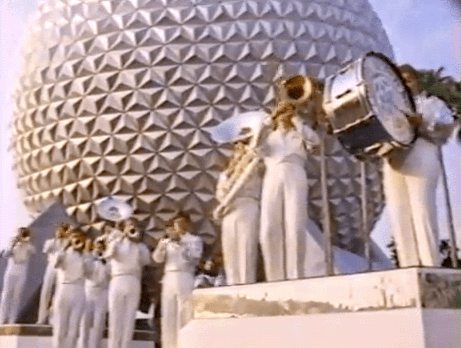
The origins of the ring shout are usually assumed to be derived from African dance, and scholars usually point out the presence of melodic elements such as call-and-response singing and heterophony, as well as rhythmic elements such as tresillo and an “hamboned” rhythm, and aesthetic elements such as counter-clockwise dancing and ecstasy,which makes ring shouts similar to ceremonies among people like the Ibos, Yorubas, Ibibios, Efiks, Bahumono and Bakongo people.
Some scholars have suggested that the ritual may have originated among enslaved Muslims from West Africa as an imitation of tawaf, the mass procession around the Kaaba that is an essential part of the Islamic pilgrimage to Mecca. If so, the word “shout” may come from Arabic shawṭ, meaning “a single run”, such as a single circumambulation of the Kaaba, or an open space of ground for running.
According to musicologist Robert Palmer, the first written accounts of the ring shout date from the 1840s. The stamping and clapping in a circle was described as a kind of “drumming,” and 19th-century observers associated it with the conversion of slaves to Christianity
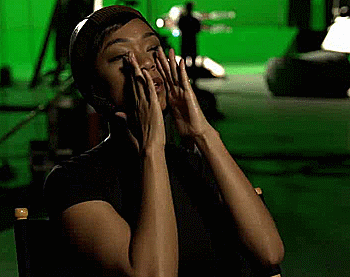
530 notes
·
View notes
Text
Celebrating Black History Month at the Chattanooga Zoo
We’re continuing to celebrate Black History Month by highlighting Black individuals who have and are continuing to connect people of color to nature, around the country and here in Chattanooga! Read on to learn more about their work–
Paving better paths for people of color in the outdoors is central to Rue Mapp’s work. In 2009, she created a national non-for-profit organization called Outdoor Afro. This organization is community based and celebrates, inspires, and educates Black connections and leadership by learning about African American history related to outdoor recreation, nature, and conservation.
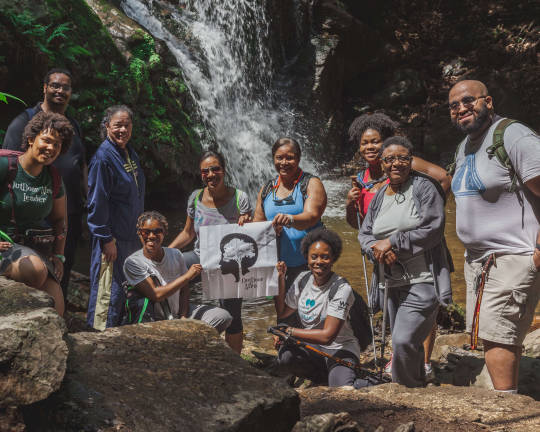
This work is extremely similar to the work that Shawanna Kendrick has been doing here in Chattanooga. She is the founder and CEO of The Hiking, Healing, and Outdoors Life (H2O Life). In 2019, Shawanna invited a group of friends to try something new - go on a hike together. This outdoor experience provided the safe space she had been seeking for Black women to “connect and reset”. After this first trip, the hikes continued and expanded to include more women of color with the goal of providing continued mental and physical healing through nature, personal connections, and a break from life’s regular pressures.

Barriers for freed Black workers in the 1800s were a lot more aggressively racially charged than modern barriers. There were “Black codes’’ which severely limited the rights of free Black people and made unreasonable requirements for them in order to work. Soloman Brown, therefore, overcame a lot to become the first Black employee at the Smithsonian in 1829. While there, he worked to become a self-educated scientist and naturalist, educator, illustrator and mapmaker, poet, and political leader, and was seemingly recognized as the first Black environmentalist.
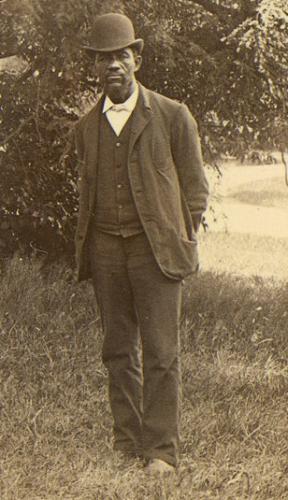
Today, big strides have been made to continue the work started by figures such as Solomon Brown, but some of the effects of the laws years ago have lingered. Clark Brewer has made it his purpose to mitigate those effects for people of color here in Chattanooga. In 2017, Clark co-founded Bridge Chattanooga, an after-school program that focused on taking kids of color on outdoor adventures such as hiking, canoeing, and caving. This eventually led him to launch his own non-profit, Huemans Outdoors, where he has worked to expand this outreach through guided excursions for youth and adults alike.

3 notes
·
View notes
Text

Kehinde Wiley
Kehinde Wiley, a gay American contemporary portrait painter, is known for his highly naturalist paintings of Black communities. Wiley’s subjects are often young black men and women, rendered in a Photorealist style against densely patterned backgrounds.
Wiley was born in Los Angeles, California. His father is a Yoruba from Nigeria, and his mother raised Kehinde and his twin brother alone. Their mother supported their interest in art and enrolled them both in after-school art classes. The siblings competed to see who could recreate the most realistic images.
Wiley earned his BFA from the San Francisco Art Institute in 1999 and his MFA from Yale University in 2001. Pictured: After Giovanni Bellini’s St Francis in the Desert.

“Wiley often references Old Masters paintings for the poses of his figures. Wiley creates a fusion of period styles and influences, ranging from French Rococo, Islamic architecture, and West African textile design, to urban hip hop and the ‘Sea Foam Green’ of a Martha Stewart Interiors color swatch. Wiley depicts his slightly larger than life-size figures in a heroic manner, giving them poses that connote power and spiritual awakening. Wiley’s portrayal of masculinity is filtered through these poses of power and spirituality.” Pictured: After Sir Joshua Reynolds’ Miss Susanna Gale.

“Wiley claims to be simultaneously drawn to the illusion used in Old Masters paintings while also wanting to expose them: ‘The appeal, I suppose, is that, in a world so unmasterable and so unknowable, you give the illusion or veneer of the rational, of order – these strong men, these powerful purveyors of truth. And so this thing that I do is in a strange sense being drawn toward that flame and wanting to blow it out at once.’” Pictured: The Virgin with the Host.

“Judith Beheading Holofernes features a modern-day Black woman as Judith and a white woman as Holofernes, challenging the viewer’s expectations of this familiar motif, inviting political readings, and ‘bending a violent image from art history – which is rife with them […] – to the needs of a country that is reexamining the violent underpinnings of even its most benign-seeming traditions.’”

22 notes
·
View notes
Text

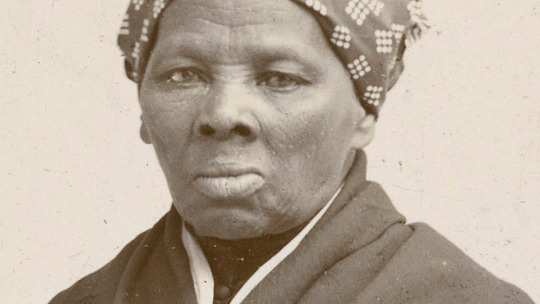
What is a naturalist? If you do a quick google, you would see someone who studies and/or knows a lot about nature to be the first thing that comes up. Who are some famous naturalists? The first ones that come to mind might include Charles Darwin, John Muir, or even Steve Irwin. If I was a betting person, I might bet that you are picturing primarily white and male figures.
You know who might not come to mind. Harriet Tubman. We know her for her work freeing enslaved individuals and paving the way for civil rights in the united states. However, what we might not know is her deep knowledge of nature, which helped her in the underground railroad.
In recent efforts to get a park named in her honor near the Chesapeake Bay, there was a deep dive into Tubman's deep connection to nature (Weisstuch, 2022). Tubman acquired a deep knowledge of the natural world around her and continued to use that knowledge both as a conductor on the underground railroad and beyond. She could read the natural world around her, from sea to land to sky, and help herself and others survive.
"From her fluency with bird calls to knowing how to wade across the swampy marshes, where it was hard to tell how deep a puddle was by sight alone, Tubman’s areas of expertise in the natural world were broad and profound. Botany, geography, astronomy, herbal medicine and wildlife biology all factored into her ability to survive and guide others to safety." (Weisstuch, 2022).
Looking to Harriet Tubman, it might make one question what other important African American figures used nature, the outdoors, and/or recreation in one way or another. Maybe we are not reading enough into history and seeing other famous figures as holding these traditionally white roles? Maybe if we expand our ideas on who what these roles, such as naturalist, mean- maybe we might start to see a more diverse landscape of people who fight these roles. Maybe this is how we inspire other young people to see more diversity in the world around them and understand the complex legacy of the natural world around us.
Citation:
Weisstuch, L. (2022, March 10). Harriet Tubman is famous for being an abolitionist and political activist, but she was also a naturalist. Smithsonian.com. Retrieved December 7, 2022, from https://www.smithsonianmag.com/history/harriet-tubman-is-famous-for-being-an-abolitionist-and-political-activist-but-she-was-also-a-naturalist-180979689/
0 notes
Photo




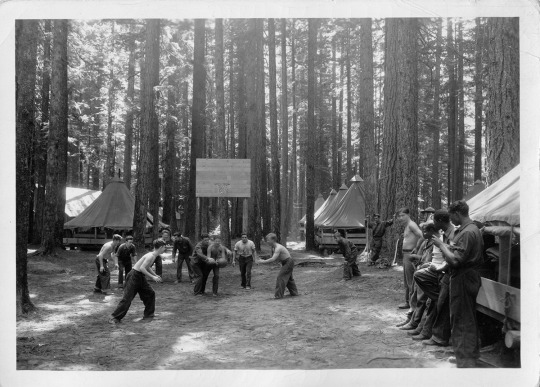
African American History Month
During Franklin D. Roosevelt’s New Deal, the Civilian Conservation Corp (CCC) was created to conserve the country’s natural resources while providing jobs for young men. In 1934, a group of African American men from New York came to Mount Rainier where they became an important part of the unfolding history of the CCC at Ohanapecosh. They joined a diversity of young men at CCC Camp 6 at Ohanapecosh where they lived, worked, and enjoyed their leisure time. They assisted with development of the Ohanapecosh Campground by clearing five acres, constructing twenty stove areas, and laying water line. Some of the men worked in the CCC camp and kitchen. Even though they were used to life in New York, many of these young men expressed regret of leaving the park when their enlistment period was over.
NPS historic photos of CCC members working and recreating at Ohanapecosh. ~pw/kl
____ Photo Descriptions: Five historic black and white photos, showing: (top) A group of young black men that stand in front of or sit on an old truck in front of a wood building. (middle left) Several young men sitting and standing among tall trees in front of a row of platform tents. (middle right) Several young men in white coats posed in two rows in front of trees. (bottom left) Three men, two white and one black, stand in front of a tree and a wood building in a forest. (bottom right) Several young men playing basketball on a make-shift court in a forest clearing surrounded by platform tents.
62 notes
·
View notes
Photo
"Verb 1. shoot craps - play a game of craps gamble - play games for money"

Sunday recreation—shooting craps. Sutter Avenue, Brownsville, Brooklyn, 1930s.
Photo: Joe Schwartz via National Museum of African American History & Culture
285 notes
·
View notes
Text
A Vanishing History: Gullah Geechee
Who are they?
The Gullah Geechee people are descendants of Africans who were enslaved on the rice, indigo and Sea Island cotton plantations of the lower Atlantic coast. Many came from the rice-growing region of West Africa. The nature of their enslavement on isolated island and coastal plantations created a unique culture with deep African retentions that are clearly visible in the Gullah Geechee people’s distinctive arts, crafts, foodways, music, and language.
The Gullah are African Americans who live in the Lowcountry region of the U.S. states of Georgia, Florida, South Carolina, and North Carolina, in both the coastal plain and the Sea Islands. They developed a creole language, also called Gullah, and a culture with some African influence.
Their language:-
Gullah Geechee is a unique, creole language spoken in the coastal areas of North Carolina, South Carolina, Georgia and Florida. It is the only distinctly, African creole language in the United States and it has influenced traditional Southern vocabulary and speech patterns.
The Gullah people speak an English-based creole language containing many African loanwords and influenced by African languages in grammar and sentence structure. Sometimes referred to as "Sea Island Creole" by linguists and scholars, the Gullah language is sometimes likened to Bahamian Creole, Barbadian Creole, Guyanese Creole, Belizean Creole, Jamaican Patois and the Krio language of West Africa. Gullah crafts, farming and fishing traditions, folk beliefs, music, rice-based cuisine and story-telling traditions all exhibit strong influences from Central and West African cultures.
The arts, crafts and music:-
The ancestors of the Gullah Geechee people brought to this country a rich heritage of African cultural traditions in art, foodways and music. Today’s Gullah Geechee arts and crafts are the result of products designed by their ancestors out of necessity for daily living such as making cast nets for fishing, basket weaving for agriculture and textile arts for clothing and warmth.
Deeply rooted in music traditions brought to the Americas by enslaved Africans, their music evolved out of the conditions of slavery that characterized their lives. The influence and evolution of musical forms that arose out of Gullah music can be heard in many musical genres such as spirituals and gospel music, ragtime, rhythm and blues, soul, hip hop and jazz.
Cultural Survival:-
Gullah culture has proven to be particularly resilient. Gullah traditions are strong in the rural areas of the Lowcountry mainland and on the Sea Islands, and among their people in urban areas such as Charleston and Savannah. Gullah people who have left the Lowcountry and moved far away have also preserved traditions; for instance, many Gullah in New York, who went North in the Great Migration of the first half of the 20th century, have established their own neighborhood churches in Harlem, Brooklyn, and Queens. Typically they send their children back to rural communities in South Carolina and Georgia during the summer months to live with grandparents, uncles, and aunts. Gullah people living in New York frequently return to the Lowcountry to retire. Second- and third-generation Gullah in New York often maintain many of their traditional customs and many still speak the Gullah language.
A Gullah house painted in the color of Haint Blue.
The Gullah custom of painting porch ceilings haint blue to deter haints, or ghosts, survives in the American South. Having also been adopted by White Southerners, it has lost some of its spiritual significance.
324 notes
·
View notes
Text
Nature's Legacy
To be melanated is to be brown
Brown like the most fertile of soil
Brown like the tallest of mountains
Melanin is a tresure
A treasure bestowed upon the chosen
A bronze legacy worth more than any gold
Mother Nature, she made us in her beauty
Beauty that could never be replicated
Beauty that leaves the entire world in awe
126 notes
·
View notes
Photo

A young fashionably dressed African American man leans on the trunk of a Cadillac convertible, while enjoying a day outdoors in a Chicago park, 1973. He is wearing a hat, light scarf, an unbuttoned printed shirt, flare trousers, and platform shoes.
59 notes
·
View notes
Photo

The Connection Between African Americans And History Of Barbeque
The word barbecue and the open-fire cooking technique came from the Caribbean amongst the Taino people around the late 17th century. The word barbecue itself means “sacred fire pit.” The unique way to cook meat spread into Spanish, French and American cultures when slaves were brought from the Caribbean.
In the Southern United States, barbecue initially revolved around the cooking of pork. Prior to the American Civil War, Southerners consumed five pounds of pork for every one pound of beef they consumed. Plantation owners regularly held large and festive barbecues, including “pig pickin’s” for slaves. Because of the poverty level in the South during that time, every part of the pig was eaten immediately or saved for later. During the Great Migration, many of the southern slaves moved to northern cities, taking their cooking techniques like barbecue along, which quickly spread across the country.
The true origin of barbecue has been debated in several cultures. Some believe it was born through a tribe in Guyana, while others believe it was a Haitian practice. In western culture, it was said that the word barbecue was a combination of words from an advertisement for a bar, beer, and pool available at a local establishment; hence the word bar-beer-cue. As the popularity of the barbecue technique spread, the distinction between regional cooking became more about what parts of the pig and cow are barbecued, how it’s present and most important, the flavors of the sauce and how and when the sauce is applied. The main regions identified in the U.S. that determine unique flavors have been broken down into several styles: Memphis, Tennessee, North Carolina, Kansas City and Texas. July is National Grilling (or Barbecue) Month and National Hot Dog Month, mainly due to the popularity of summer cookouts and consumption during the 4th of July holiday. Original Aricle Found At Little Known Black History Fact: The History of Barbeque | Black America Web.
1 note
·
View note
Text
“Sometimes we make the leap from, ‘We’re not seeing them at the park, so [therefore] they’re not engaged with the environment,’” says Finney, the author of “Black Faces, White Spaces: Reimagining the Relationship Between African Americans to the Great Outdoors.” For example, while there are three big national parks in close proximity to Miami, records show there aren’t large numbers of people of color going to the parks. “But every single day you can drive all around Miami, Fort Lauderdale, and down towards the Keys, and see black and brown people fishing from bridges and the canals,” she says. “And that becomes invisible. It doesn’t get counted in the conversations.”
47 notes
·
View notes